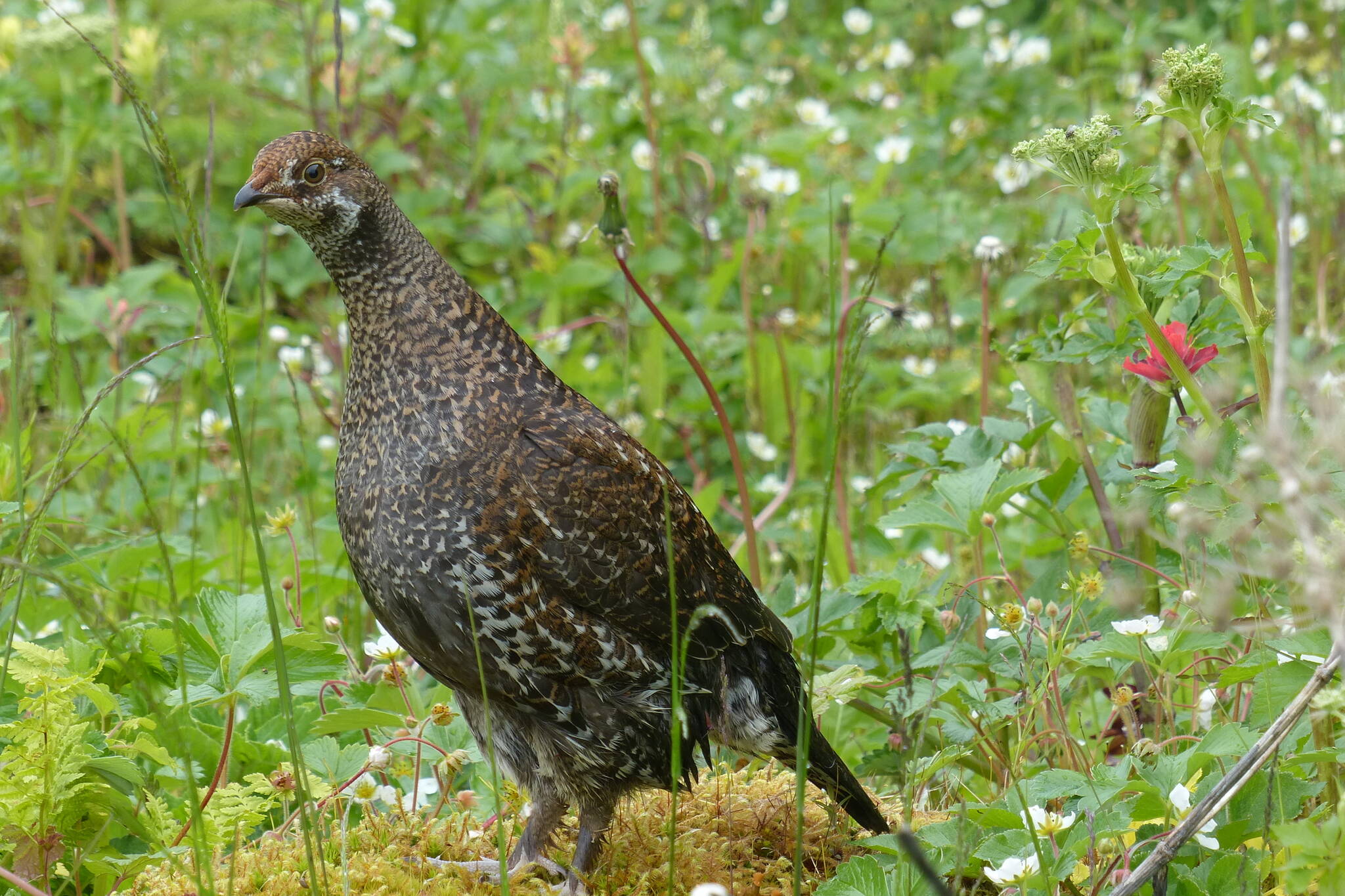A September morning stroll with a friend on the Switzer Creek Trail (and the nearby DZ Loop Trail) found the streams teeming with pink salmon. The humped backs of the males were exposed to air above the water surface, so they showed white and conspicuous. The females seemed to be outnumbered by the males: in one pool six males contended for two females and in another pool eight males circled around one female.
Chum carcasses from an earlier run littered the gravel bars, not scavenged by birds or bears. And there were no bear signs on the trail and no eagles in the trees. Perhaps scavenging was better elsewhere.
In a few spots next to the shaded trail, we found patches of flat, bright green vegetation — mats of twining stems and leaves of (probably) Stellaria crispa, one of several species known as starwort. This plant can grow in many habitats including shady alder woods, according to a field guide, and here it was in a conifer forest. However, it seemed to be at the very edge of the trail, where a plant that lies flat on the ground might find some light in the forest. The other plants in the forest reach as high as they can, to get the light.
Starwort makes tiny, almost petal-less flowers, a good indication that it does not use pollinating insects to achieve seed set. Instead, it probably self-pollinates, using its own pollen to fertilize seeds, or makes seeds asexually, with no pollination involved. This species is part of a cosmopolitan genus with many species having much reduced petals or none at all. This non-petaled condition apparently has evolved many times in this genus, from original ancestors that had petals.
Stumps, fallen tree trunks, and turned-up root wads often provide new substrate for plants to colonize. We commonly see a nurse log with a row of hemlock saplings or a stump laden with ferns or blueberry bushes. Sometimes we also see big trees whose roots arch down over wide open spaces where a stump used to be, before it decayed away (there’s a good example on the nearby DZ loop). On this stroll, we found a fine specimen displaying three generations of colonization: a rotting stump supporting a big spruce tree that supports two sturdy young hemlocks straddling its sides, their own roots now reaching down to the ground. A long, upright root of one root wad holds a colonizing fern and some smaller companions many feet above all the rest of the understory — an elevated island of vegetation, no doubt doomed to collapse to ground level eventually.
Mid-September came, and the forecast was for many days of rain. Aaarrrgh! But suddenly, one day dawned with heavy fog and a promise of blue skies. So up the tram we went, hoping for the best in weather and choosing a day with not quite so many floating hotels in the channel. We didn’t make it to the higher elevations, alas, but enjoyed the view of vanishing fog and seeing some things at the lower levels — to some distance above the cross.
False hellebore (so-called; a poor name because this plant is not related to the real hellebore and does not even look like it) was brown and flat on the ground, done for the year. However, we found seven kinds of flowers in the very last stages of bloom, looking quite bedraggled: for instance, yellow paintbrush, fireweed, foamflower, rattlesnake root. And one species still had flowers in good shape — miners’ lettuce, growing close to the ground under the shelter of overhanging bushes.
We noticed that salmonberry bushes in some places had been hard hit by some herbivore(s). Whole leaves were often stripped off, leaving bare stems, and some tiny twigs were nipped. This didn’t look like insect work, which left porcupine, marmot, and deer as possible perpetrators. But some of the stripped stems were too tall for a marmot to reach and showed no sign of being bent down to porcupine level. So we guessed that a vagrant deer had wandered down the trail.
A fox sparrow greeted us from the bushes. Later we saw one nibbling devil’s club fruits. Smaller sparrows flitter by too rapidly for me to make an ID. On the way down, as we watched that fox sparrow, there was a sudden ruckus in the nearby brush—something biggish. We quietly turned around and spotted a grouse, ambling up the path. But coming down the path was a group of several gray-haired folks and a couple of small (?)grandkids. They all slowed and stopped to watch the grouse. A very small boy in the party had a mobile phone and knew how to use it (of course). I asked him what his ‘app’ had said about that grouse and was told “sooty grouse.” Bingo. I didn’t need the “app” to make the ID, but I was amused to watch this little techno-wizard at play.
• Mary F. Willson is a retired professor of ecology. “On The Trails” appears every Wednesday in the Juneau Empire.

